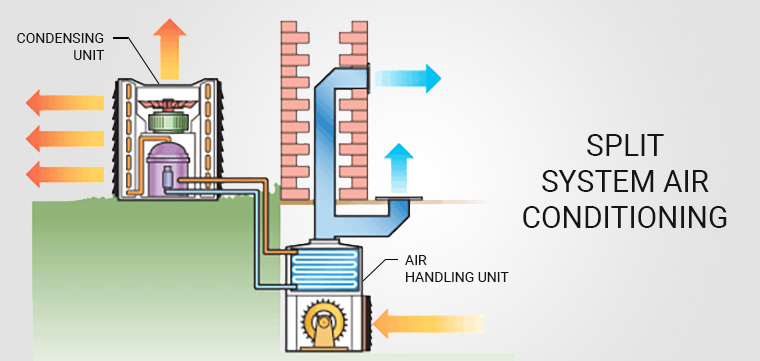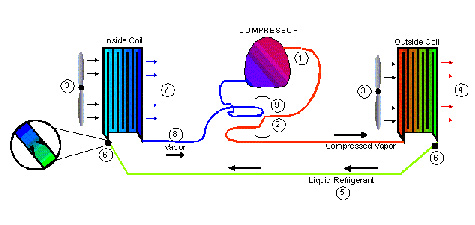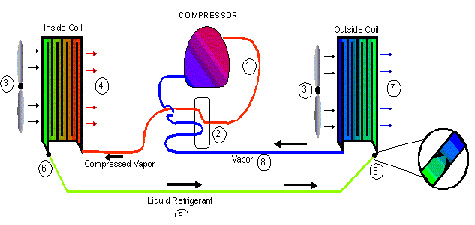Furnaces
There many benefits to updating your gas blown furnace. The biggest being Reduced Energy Costs. As your heating and cooling system ages, it can lose its ability to cool or heat your home. If your current heat pump or air conditioner is more than 10 years old; or your furnace or boiler is more than 15 years old, it may be time to replace it with a more efficient system. Inadequate insulation or equipment installation may be the cause of temperature changes from room to room. Replacing your current equipment with an ENERGY STAR® rated heating and cooling systems can help reduce high energy costs as much as 10-30%.
There are several factors to consider when selecting a furnace:
What is BTU? A BTU is an acronym for British Thermal Unit and is the amount of heat required to raise the temperature of one pound of water by one degree in one hour. Furnaces are rated by their Btu input capacity. Air conditioners will remove 12,000 Btu’s of heat per hour per ton of cooling.
What is KW? A Kw (kilowatt) is a unit of power equal to 1000 watts. One Kw (1000 watts) will produce about 3417 Btu’s of heat. A 10Kw heating element, for example, produces 10 x 3417 Btu’s or 34,170 total Btu’s of heat. Each heating element size offered will also tell you how much heat it produces.
What is DOWNFLOW? This term refers to the furnace air delivery configuration. Downflow means the supply (warm) air is delivered from the bottom of the furnace into a duct system beneath it. Be sure to specify a downflow furnace when ordering as they are typically a different model number from the upflow/horizontal models.
What is HORIZONTAL? This term refers to the furnace air delivery configuration. Horizontal means the furnace will lay on its side for use in an attic or tight basement. All Goodman and Ruud furnaces are horizontal compatible and don’t require any modification whatsoever to be used in this manner.
What is UPFLOW? This term refers to the furnace air delivery configuration. Upflow means that the supply (warm) air is delivered upward, off the top of the furnace into an overhead duct system.
What is a BYPASS DAMPER? A bypass damper relieves the pressure created when one or more zone dampers are closed while another zone is calling for air. Imagine a two zone system with one zone closed – the furnace is still trying to deliver its full air capacity. The air volume that would have been routed to the now closed zone is “dumped” into the return air duct, preventing an over-delivery of air to the open zone.
What is a ZONE DAMPER? A zone damper is installed within your ductwork and controls air delivery to any given zone of your home. A butterfly valve contained inside the damper opens and closes as needed to regulate the air requirements of each individual zone.
What is 80% EFFICIENT? Also known as AFUE, or Annual Fuel Utilization Efficiency, this percentage number (80 in this case) represents the percentage of fuel that is converted to useable heat. The other 20% is exhausted out the flue or chimney. The current federal minimum for residential furnaces is 80% AFUE. Furnaces that are between 15 and 25 years old burn fuel at an average efficiency of about 65%.
Furnaces older than 25 years can be as little as 55-60% efficient meaning that between 40-45% of each dollar spent on gas is exhausted through the flue, providing no value to the homeowner. On average, an 80% efficient furnace will reduce fuel costs by about 23% when compared to a furnace that is between 15 and 25 years old. Purchase an 80% efficient furnace if you are in a southern climate or if you just wish to purchase an inexpensive furnace and still realize some savings on fuel.
What is 93% EFFICIENT? Also known as AFUE, or Annual Fuel Utilization Efficiency, this percentage number (93 in this case) represents the percentage of fuel that is converted to useable heat. The other 7% is exhausted out the flue or chimney. Venting requires 2″-3″ PVC, making installation of the flue a breeze. The current federal minimum for residential furnaces is 80% AFUE. Furnaces that are between 15 and 25 years old burn fuel at an average efficiency of about 65%.
Furnaces older than 25 years can be as little as 55-60% efficient, meaning that between 40-45% of each dollar spent on gas is exhausted through the flue, providing no value to the homeowner. On average, a 93% efficient furnace will reduce fuel costs by about 43% when compared to a furnace that is between 15 and 25 years old. Purchase a 93% efficient furnace if you are not in an extreme southern climate and if you wish to obtain maximum savings on your annual fuel bill.
What is 2-STAGE? A 2-stage gas furnace is like having two furnaces in one. On the coldest days, the furnace operates in the high-stage mode at 100% capacity. But on most days, the furnace comfortably conserves energy by operating in the low-stage mode at just 70% capacity. The 2-stage gas valve contributes to greater comfort by reducing temperature swings and maintaining even temperatures throughout your home. A 2-stage gas valves also run quietly on low stage 90% of the time, producing just 25% of the normal high-stage sound while significantly reducing energy consumption.
What is VARIABLE SPEED? A variable speed furnace blower motor is different from a standard blower motor in that it features a high efficiency Electronically Commutated Motor (ECM) by General Electric. These motors are simply the quietest, most efficient and powerful motors available for today’s furnaces. You will notice a marked increase in both system performance and comfort.
THE VARIABLE SPEED ADVANTAGE is provides lower energy costs, significantly reduced sound levels, eliminates the initial blast of air at each on-cycle, r0duces temperature variations from room-to-room and floor-to-ceiling, substantially increases humidity removal in the cooling mode.
What is LINESET? Also known as refrigerant lines, they are used in a split (an indoor furnace or blower and an outdoor condensing unit) cooling system to supply and return refrigerant between the outdoor condenser and the indoor coil. A line set consists of a smaller liquid line and a larger insulated suction line.



